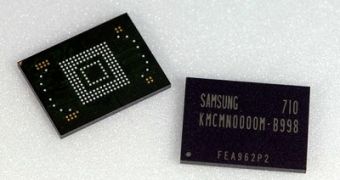Samsung Electronics announced that it will speed up production in order to meet its monthly targets, after the last week's incident led to the complete halt of the NAND memory chip production. The power outage forced Samsung to shut down six of its NAND production lines and discard most of the flash memory chips that were in different stages of production on those lines. This causes a massive ripple effect on the entire NAND market, causing concern among the manufacturers dependent on those chips and raising the shares of the rival memory manufacturers.
Even if Samsung managed to restart production after a few hours, the projected losses are as high as $43 million. "Some of the wafers that were being processed when the outage hit can be salvaged, and the potential yield from the recovered wafers was at a good level," said Choi Chang-sik, executive vice president at Samsung's semiconductor business, at a news conference in Kiheung, who was cited by the news site News.zdnet.com.[http://news.zdnet.com/2100-9595_22-6200957.html]
According to Samsung, the deliveries of NAND memory chips it its main customers, Apple and Nokia, will not be disrupted, but analysts are less optimistic about that promise and they said that the company should increase its productivity. "The DRAM market could potentially benefit as Samsung may shift capacity from DRAM to flash...to make up for lost production," C.W. Chung, an analyst at Lehman Brothers, said in a research report about Samsung's current situation. The switch in production from computer RAM memory to NAND flash chips may help Samsung make up for most of its losses and on the other hand may help other memory manufacturers as a smaller RAM production will automatically mean higher prices.
According to some analysts, any other hardware manufacturer may someday find itself in Samsung's current position, so they advise all companies to extend their supply bases and to plan ahead for such a situation.

 14 DAY TRIAL //
14 DAY TRIAL //